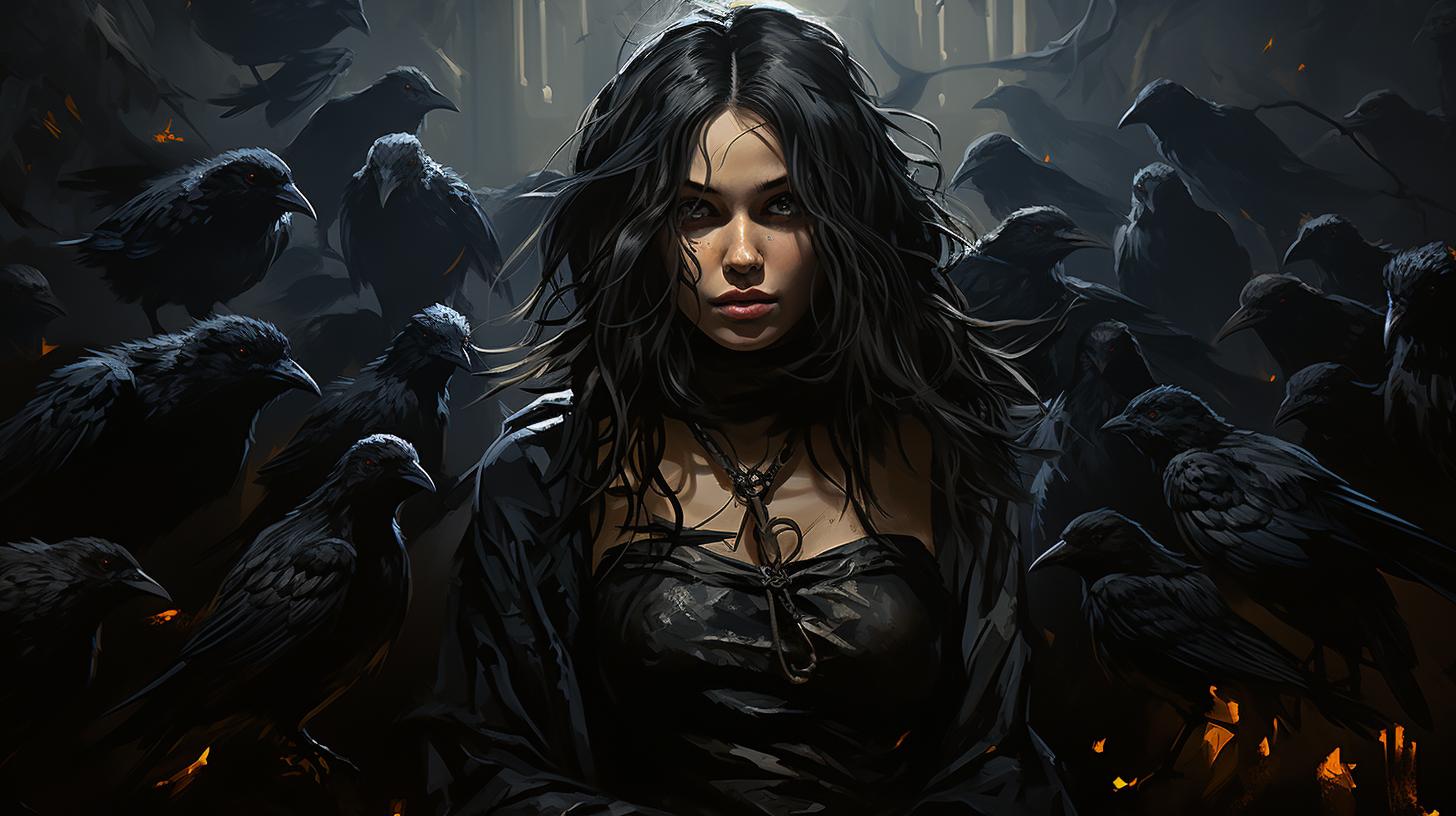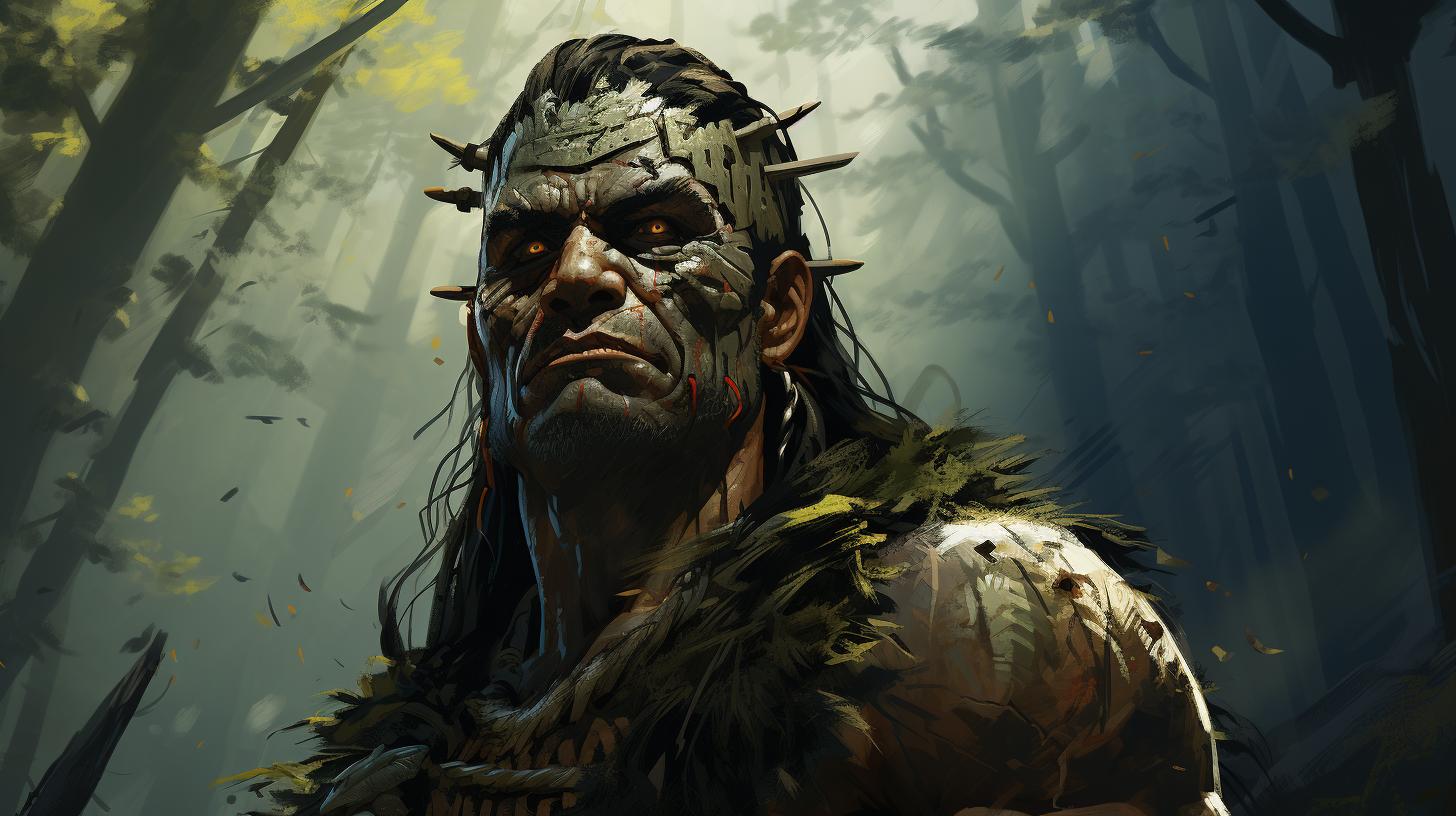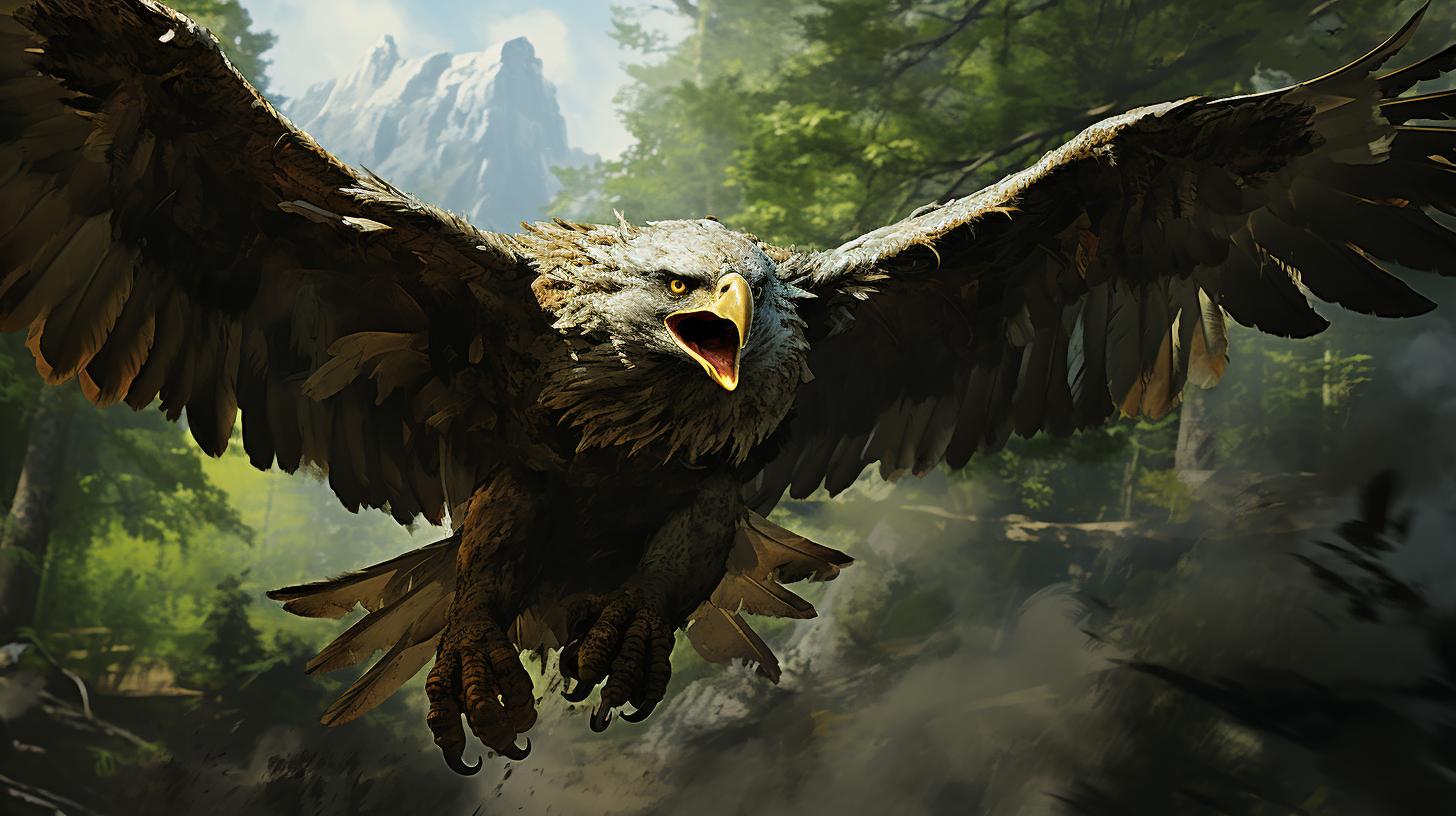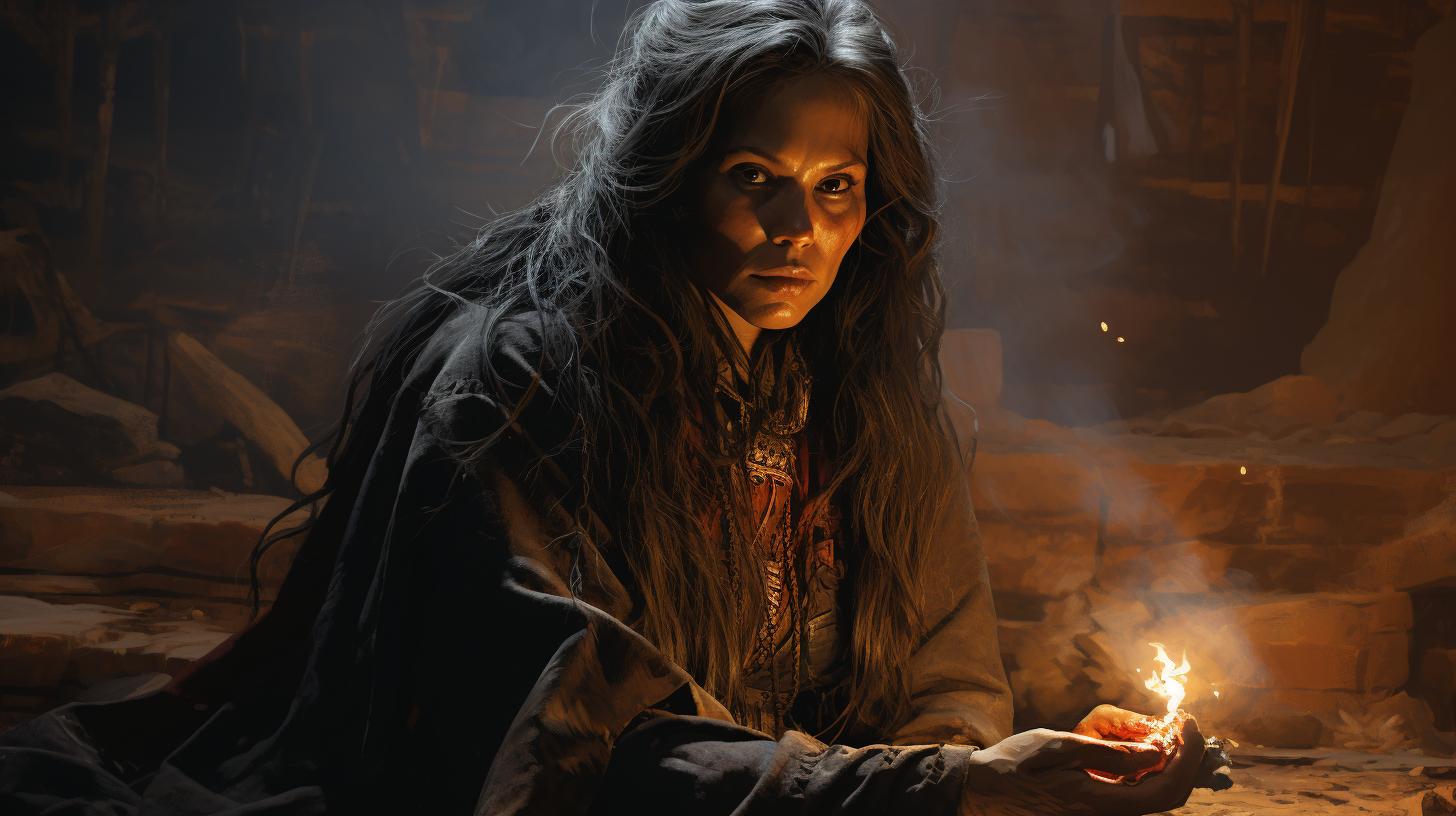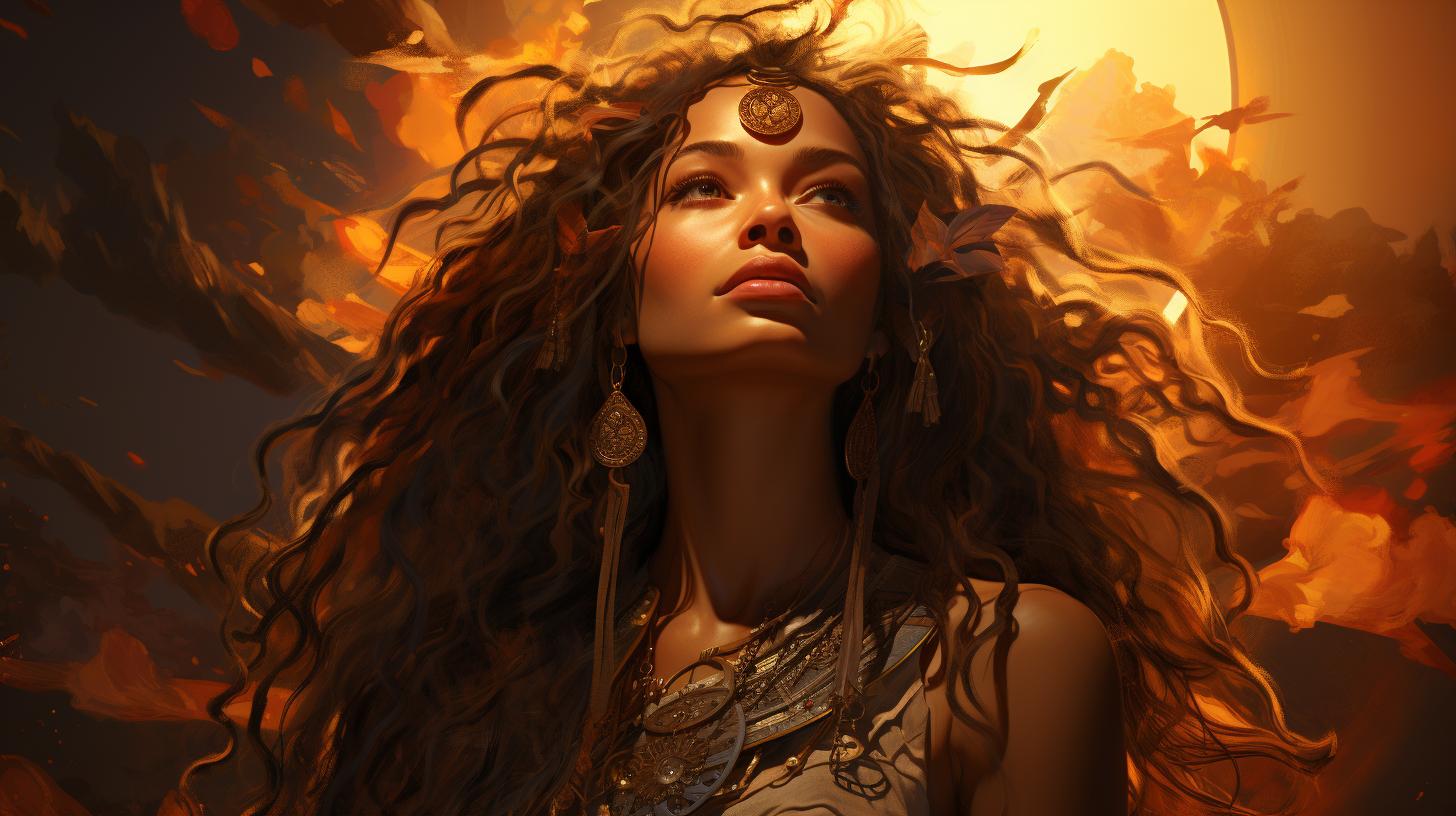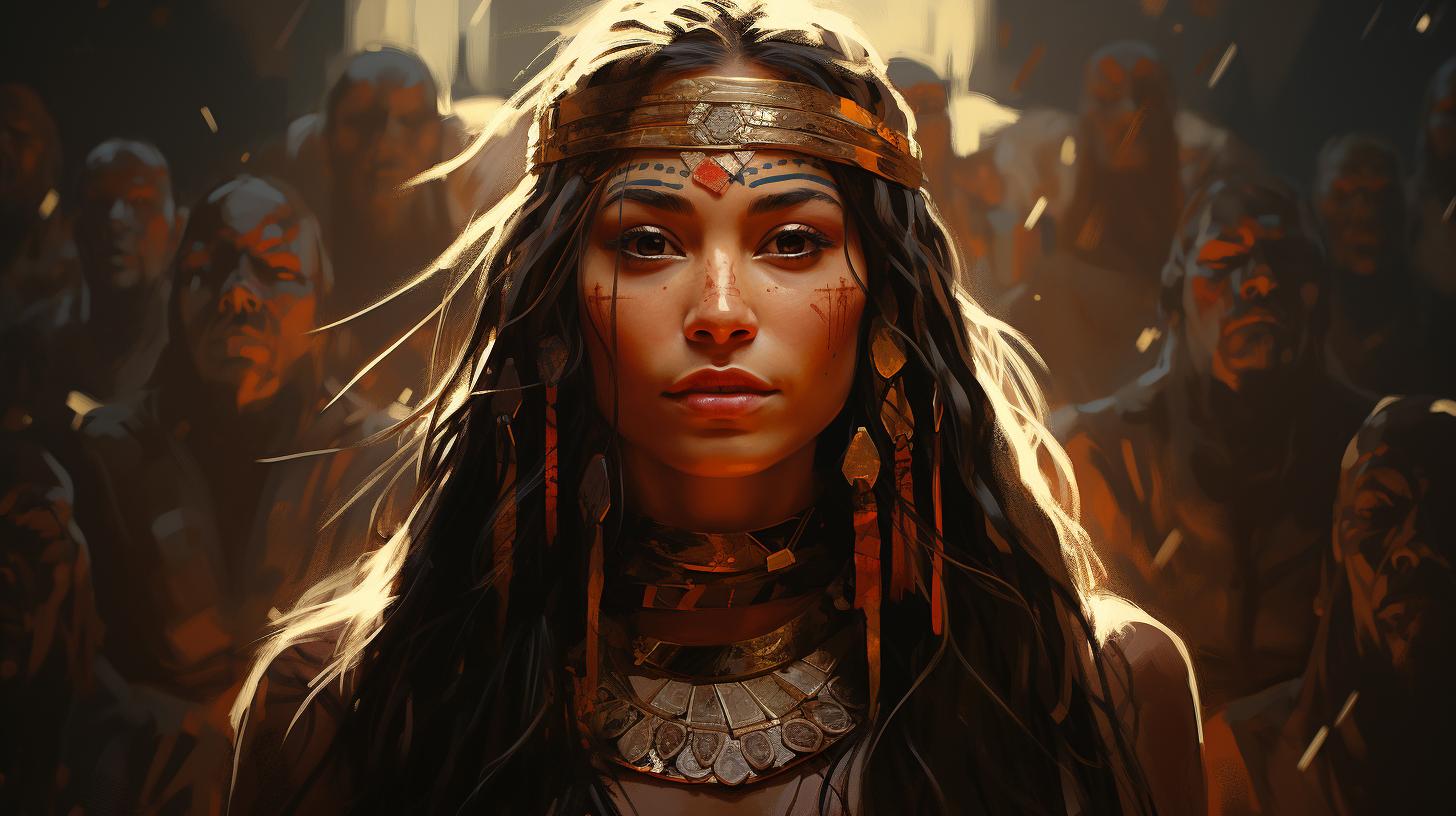Raven Mocker: The Cherokee Legend of Malevolence
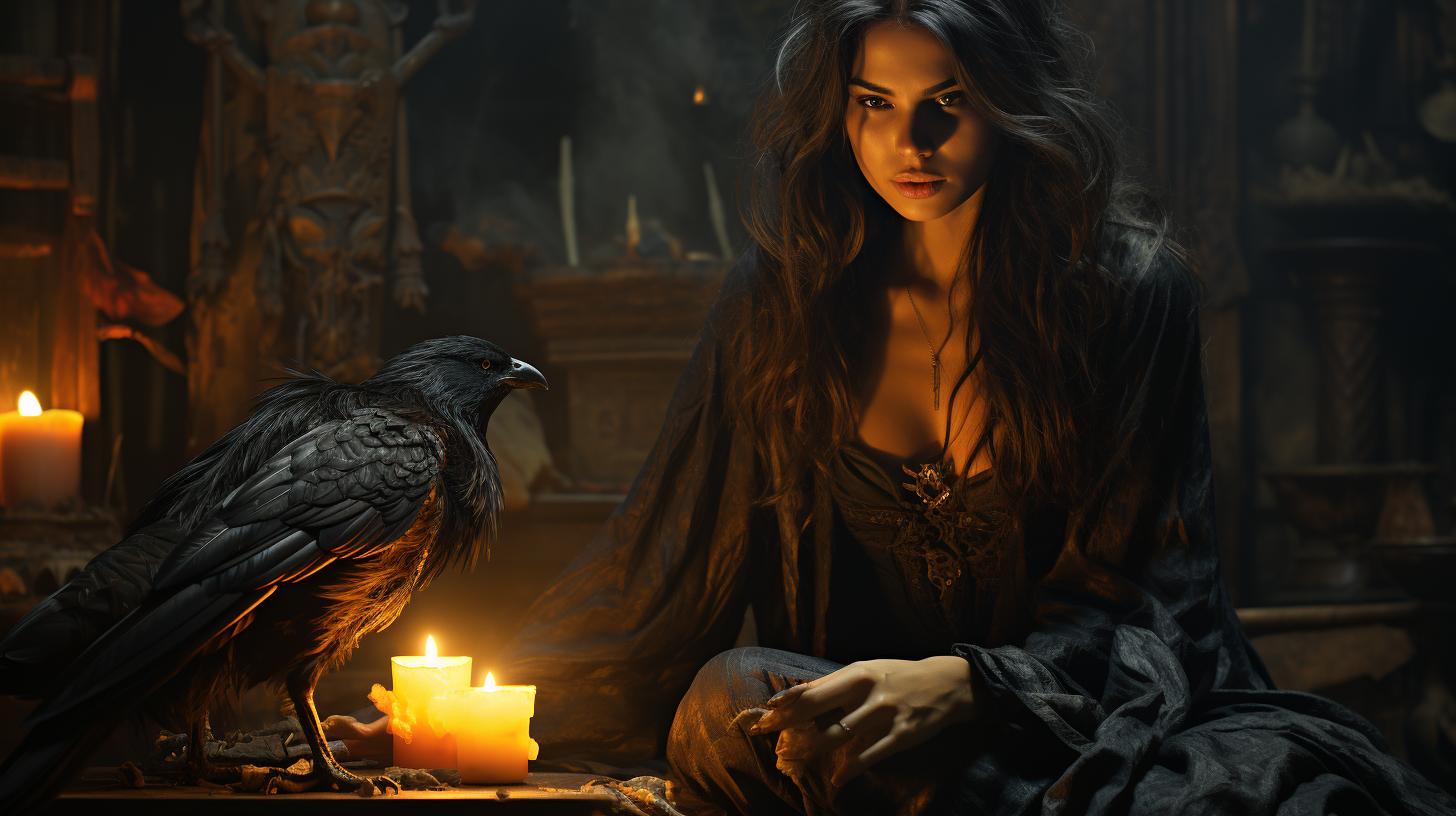
The Cherokee Raven Mocker legend, a haunting and chilling part of Cherokee mythology, revolves around these malevolent beings preying on the dying to steal their life force and extend their time on Earth.
Resembling ravens in flight, they also harvest body parts from the deceased to replace their decaying limbs. Talismans are used to detect them, and upon discovery, they often meet their demise within seven days.
This article delves into the Raven Mocker legend, exploring its origins, characteristics, battles against them, and the tales passed down through generations. It also highlights the cultural beliefs and traditions surrounding these feared creatures and the role of Cherokee medicine in protection against them.
Overview of Cherokee Raven Mocker Legend
The Cherokee Raven Mocker legend is a captivating and eerie aspect of Cherokee mythology, instilling both fascination and fear. In this ancient lore, Raven Mockers are depicted as malevolent beings with a relentless hunger for the human life force, seeking to prolong their existence by targeting those on the verge of death.
These supernatural creatures, resembling ravens in Cherokee folklore, emit a bone-chilling screech that terrifies those who hear it.
Legend has it that Raven Mockers, in their quest to feed on the life force of the dying, engage in macabre practices of harvesting body parts from the deceased.
Using these harvested limbs to replace their decaying extremities, they continue their existence, hidden among the living. Tales warn of the dire consequences faced by Raven Mockers if discovered. Once revealed, they become the target of relentless pursuit and are hunted down by those with the knowledge and means to thwart their malevolent intentions.
If a Raven Mocker fails to feed or replace its rotted flesh within seven days, it meets a grisly demise.
The Cherokee people developed talismans and protective charms to detect and defend against these wicked creatures.
These objects serve as guardians, alerting individuals to the presence of a Raven Mocker and offering a crucial opportunity to protect not only oneself but also the vulnerable souls on the brink of death.
The Cherokee Raven Mocker legend embodies the darker aspects of Cherokee folklore, serving as a cautionary tale that highlights the importance of cherishing and safeguarding the sick and dying within the community.
It reflects the deep-rooted cultural beliefs in supernatural forces and the ongoing battle against the forces of evil.
Origins and Significance of the Raven Mocker Myth
1. Creation of the Legend:
The origins of the Raven Mocker myth, enshrouded in the mists of time, emerged through oral traditions as a cautionary tale to warn the Cherokee of the dangers lurking in the shadows.
This legend speaks of the transformation of healers and revered medicine practitioners into heart-stealing creatures, embodying fears and teaching the importance of strong medicine and protective measures against such entities.
2. Spiritual Significance:
The Raven Mocker represents the embodiment of darkness and death in Cherokee culture. They are feared and envied for their ability to prolong their own lives by stealing the essence of the dying, consuming their hearts, and absorbing their remaining time on Earth.
This act of stealing the heart signifies their mockery of life and death, underscoring the importance of respecting the natural cycle of existence. Their ability to prevent others from stealing the heart showcases the depth of their power.
3. Cultural Beliefs and Superstitions:
Within Cherokee culture, the Raven Mocker symbolizes the consequences of forbidden actions and the breaking of sacred taboos. Their existence serves as a reminder of the need to honor and care for the sick and dying, as neglecting them could make them vulnerable to these malevolent creatures.
Belief in the Raven Mocker extends beyond mere superstition; it reflects a deeper understanding of the interconnectedness of the spiritual and physical realms. It is said that certain medicine men can identify these creatures, as mockers are normally invisible during their feeding, but their presence can still be detected by those with strong medicine.
4. Legends and Narratives:
Various tales have been woven around the Raven Mocker, illustrating their gruesome deeds and encounters with individuals brave enough to confront them. These stories often highlight how the Raven Mockers, feared and envied by the other witches, engage in tormenting and killing their victims.
After killing their victim, they consume his heart, believing it will extend their lives. The slain would have still lived if not for the Raven Mockers’ intervention. These stories have been passed down through generations, serving as cautionary lessons and reminders of the consequences of straying from the path of righteousness.
5. Modern Interpretations:
In recent times, the Raven Mocker myth has become a subject of interest in literature, art, and media. Authors and artists often draw inspiration from this haunting legend to explore themes of mortality, morality, and the supernatural.
Such modern interpretations continue to keep this ancient Cherokee myth alive in the collective consciousness, illustrating the ongoing battle against those who would rob the sick and the elderly of their life force.
Characteristics and Behavior of Raven Mockers
The Cherokee Raven Mockers possess distinct characteristics and display particular behaviors that make them both feared and despised in Cherokee folklore. Understanding their traits is key to recognizing and protecting oneself from these malevolent beings.
- The Raven Mockers are supernatural creatures that resemble ravens when in flight. Their ability to shapeshift and take on a human form, often appearing as old withered men and women, allows them to blend in with the living.
- These creatures emit a piercing cry that sends chills down the spine of anyone who hears it, making it a recognizable warning sign of their presence.
- Raven Mockers have an insatiable appetite for human life force.
They target individuals who are near death, preying upon them to steal their remaining time on Earth and absorb their life energy.
- In their pursuit of sustenance, Raven Mockers are known to harvest body parts from the deceased, replacing their own decaying limbs with fresh ones.
This gruesome behavior highlights their mockery of the living and the dead alike.
- If a Raven Mocker is discovered, swift action must be taken to prevent them from replenishing their rotten flesh or feeding on other victims.
Failure to do so will result in their death from starvation within seven days.
These malevolent beings are feared within Cherokee culture due to their ability to prolong their own lives by stealing the life force of others.
The legends surrounding the Raven Mockers serve as a reminder to be vigilant and cautious during times of vulnerability, particularly when death is imminent. The use of talismans and traditional Cherokee medicine plays a significant role in detecting and protecting against these formidable creatures.
The Battle Against Raven Mockers in Cherokee History
Throughout Cherokee history, there have been numerous battles fought against the menacing Raven Mockers. These battles were not only physical clashes but also spiritual and psychological struggles against these malevolent beings.
The Cherokee people believed that the Raven Mockers possessed powerful supernatural abilities, making them challenging adversaries. The battles against them were not only fought by individuals but often involved the collective efforts of warriors, medicine men, and the entire Cherokee community.
The strategies employed in these battles varied, depending on the knowledge and resources available to the Cherokee people at the time. They used a combination of physical combat, spiritual rituals, and the assistance of medicine men to confront the Raven Mockers, notorious creatures in Cherokee folklore believed to cause the imminent death of their victims by stealing their life force.
One common strategy was to expose the Raven Mockers’ true identity by using talismans and other protective objects infused with Cherokee medicine. These talismans were believed to possess the power to reveal the Raven Mockers’ true forms, making them visible when otherwise they might remain invisible, and thus vulnerable to attack.
In some instances, Cherokee warriors embarked on dangerous journeys into the spirit world to confront the Raven Mockers on their own turf. These brave warriors relied on their spiritual strength, guided by the wisdom of their ancestors, to engage in battles against these malevolent entities.
The battles against the Raven Mockers often resulted in fierce and grueling confrontations. Cherokee warriors risked their lives to protect their communities from the evil influence of these creatures. It was believed that a successful battle against a Raven Mocker would not only save a single life but would also help safeguard the entire Cherokee nation from their wicked intentions.
Legends recount stories of brave warriors engaging in epic battles against the Raven Mockers. These tales serve as a testament to the resilience, courage, and determination of the Cherokee people in their fight against these terrifying creatures.
In the face of the battles fought against the Raven Mockers, the Cherokee community united to support and protect one another. They shared knowledge, wisdom, and protective measures to ensure the safety of their loved ones, falling back on the strength of their cultural beliefs and traditions.
The battles against the Raven Mockers etched a significant chapter in Cherokee history, highlighting the bravery and resilience of the Cherokee people in their continuous struggle against malevolent forces. Even today, the legacy of these battles serves as a powerful reminder of the importance of unity, spiritual fortitude, and cultural preservation.
Stay tuned for more fascinating insights into the Cherokee Raven Mocker legend and its profound impact on Cherokee culture. Learn how these legends reflect deep fears and the cultural significance of the Raven in Cherokee symbolism, embodying a fiery shape and strong wind spirit that visits North American communities every year.
Legends and Tales Involving Raven Mockers
The legends and tales surrounding the Cherokee Raven Mockers are filled with intrigue, danger, and the supernatural. These stories have been passed down through generations, captivating listeners with their thrilling narratives and cautionary messages.
The Story of the Brave Warrior and the Raven Mocker
In this legendary tale, a brave warrior ventures deep into the forest, determined to confront a Raven Mocker that has been terrorizing his tribe. Armed with his bow and arrows, he sets off on a perilous journey, facing various trials and challenges along the way.
The old wisdom of the Cherokee and their deep understanding of these folklore creatures guide him, as he attempts to spot them and prevent them from hovering over the dying, which is believed to prolong their own lives at the expense of the victim.
The Witch’s Curse: The Encounter with a Raven Mocker
This haunting tale recounts the chilling experience of a young Cherokee woman who unwittingly crosses paths with a Raven Mocker. As the story unfolds, she is tormented by inexplicable occurrences, nightmares, and a series of unexplained deaths within her village.
With the help of a wise elder, she uncovers the truth behind the Raven Mocker’s curse and discovers that strong medicine cannot always prevent Raven Mockers from feeding, but those with knowledge can mitigate their terrifying impact.
The Haunting of Ahkyeli Ski Island: A Raven Mocker’s Lair
On Ahkyeli Ski Island, whispers of a Raven Mocker’s lair echo through the air. This spine-chilling tale unravels the mysteries shrouding the island and the inhabitants who dare to venture there.
As unsuspecting individuals stumble upon the lair, they find themselves entangled in a web of darkness, fighting for their lives against the Raven Mocker’s relentless pursuit. Invisible when it chooses, the Raven Mocker robs the sick and causes them to soon die, tormenting and feeding off their essence.
Cultural Beliefs and Traditions Surrounding Raven Mockers
The cultural beliefs and traditions surrounding Raven Mockers hold significant importance in Cherokee mythology. These malevolent creatures evoke fear and caution among Cherokee communities, leading to various practices and rituals aimed at protection.
1. Recognizing and Identifying Raven Mockers: The Cherokee people believed that only those with the proper medicine had the ability to recognize the true nature of a Raven Mocker. They believed that these beings appeared as normal individuals during the day but transformed into their supernatural form at night.
- Cherokee talismans and charms were often used to detect the presence of a Raven Mocker. These objects were believed to help ward off their evil influence.
2. Guarding the Dying: According to Cherokee tradition, it was crucial to provide support and care to the sick and dying.
This practice aimed to protect them from being targeted by Raven Mockers, who sought to steal their life force.
- Family members and community elders would stay by the side of the dying person, offering comfort and protection.
- Ceremonies and prayers were performed to ensure the safe passage of the soul and to thwart any attempts by Raven Mockers to intervene.
3.
Medicine and Spiritual Practices: Cherokee medicine and spiritual practices played a vital role in protecting individuals and communities from Raven Mockers.
- Medicine men and women, known as shamans, possessed the knowledge and power to confront and counteract the malevolent forces of Raven Mockers.
- Cherokee healing practices, involving the use of medicinal herbs and rituals, were employed to enhance spiritual well-being and ward off negative energies associated with these supernatural beings.
4.
Transmitting the Knowledge: The traditions and beliefs surrounding Raven Mockers were passed down through generations, ensuring that the community remained aware and prepared to face these dangerous entities.
- Elders played a crucial role in preserving and sharing their knowledge and experiences with younger members of the Cherokee tribe.
- Oral storytelling and recounting of legends were methods used to educate the community and instill a sense of caution and respect for the dangers posed by Raven Mockers.
Cultural beliefs and traditions surrounding Raven Mockers reflect the deep spiritual connection the Cherokee people have with their mythology.
These practices serve as a means to protect themselves and their loved ones from the malevolent forces that lurk in the darkness, ensuring the preservation of their cultural heritage and the safety of their communities.
Cherokee Medicine and Protection Against Raven Mockers
Cherokee culture holds a deep respect for the power of medicine and the ability to protect against the malevolent forces of Raven Mockers. Traditional Cherokee medicine is integral to the spiritual and physical well-being of the community, utilizing a combination of herbs, rituals, and spiritual practices to ward off these supernatural beings.
1.
Medicinal Herbs: Cherokee healers have extensive knowledge of various medicinal plants and herbs found in their native lands. These plants are believed to possess protective properties that can shield individuals from the harmful intentions of Raven Mockers.
Examples include the sacred smudging herb, sage, which is used to cleanse and purify spaces, and sweetgrass, which is burned to repel negative energy. Medicine can not always protect from the Raven Mockers, but these days medicine is combined with strong traditional knowledge to enhance effectiveness.
2. Ceremonial Rituals: Ceremonies play a significant role in Cherokee medicine, with specific rituals aimed at invoking spiritual protection against Raven Mockers. These ceremonies often involve the participation of community members, who gather to offer prayers, songs, and dances to strengthen their connection with the divine forces and create a shield of spiritual protection.
3. Sacred Objects and Talismans: The Cherokee people believe in the power of sacred objects and talismans to ward off evil spirits. Amulets or charms made from natural materials such as feathers, stones, or shells are believed to possess spiritual energy that can repel Raven Mockers.
These talismans are often worn or kept near individuals as a form of constant protection.
4. Spiritual Guidance: Cherokee healers, known as “medicine people,” play a crucial role in providing spiritual guidance to those seeking protection against Raven Mockers.
These healers possess deep knowledge and connection with the spiritual realm, enabling them to guide individuals in rituals and ceremonies that garner spiritual strength and protection.
It is important to note that Cherokee medicine and protection against Raven Mockers are deeply intertwined with the cultural and spiritual beliefs of the Cherokee people.
The practices mentioned above are carried out with reverence and respect for the ancient traditions passed down through generations.
The Symbolism of Ravens and Mockingbirds in Cherokee Culture
In Cherokee culture, the symbolism of ravens and mockingbirds holds great significance. These birds are not only creatures of nature but also carry deep spiritual meaning and serve as messengers between the human and spirit world.
Their symbolism reflects various aspects of Cherokee beliefs, traditions, and values.
Ravens:
- The raven is often associated with transformation and wisdom. It is considered a mystical bird that possesses supernatural powers and knowledge.
- In Cherokee folklore, ravens are believed to have the ability to shape-shift into human form, making them powerful and mysterious beings.
This aspect of the raven connects with the Cherokee raven meaning, where the raven is seen as a symbol of change and intelligence.
- They are seen as guardians and protectors, representing insight, intelligence, and the preservation of ancestral knowledge.
- Ravens are also connected to the spirit world and are thought to carry messages from ancestors or spirits.
The presence of a raven is believed to bring good fortune and blessings, while their absence signifies potential danger or misfortune.
Mockingbirds:
- Mockingbirds are revered for their enchanting songs and mimicking abilities.
They symbolize harmony, balance, and the power of music.
- Their melodious voices are thought to bring joy, healing, and positive energy to both humans and the natural world.
- Mockingbirds are seen as messengers of peace and a connection to the divine.
Their songs are believed to carry prayers to the Creator.
- These birds are also associated with protection against evil and negative forces, acting as guardians of the sacred.
- In Cherokee culture, mockingbirds are regarded as symbols of resilience and adaptability, teaching the importance of embracing change and finding harmony in all circumstances.
Through their symbolism, ravens and mockingbirds hold a special place in Cherokee culture, representing wisdom, spirituality, protection, and the innate connection between humans and the natural world.
Their presence and significance continue to be deeply respected and honored within Cherokee traditions and ceremonies.
Comparison with Other Witches and Supernatural Beings in Cherokee Folklore
In Cherokee folklore, the Raven Mockers hold a unique place among other witches and supernatural beings. While there are similarities between them and other mystical entities, there are distinct characteristics that set Raven Mockers apart.
Known as one of the most feared of all witches after death, the Raven Mocker’s malice is known to torment the living and feeding off their life force, which causes their victims to soon die, a fact that imbues them with a sinister reputation unlike any other supernatural entity.
- Snake Dancers: Like Raven Mockers, Snake Dancers possess powerful magic and are feared by the Cherokee people. However, while Snake Dancers are known for their ability to control snakes and use venom in their spells, Raven Mockers focus more on stealing life force and extending their own lives, feeding but those they prey upon soon die after tormenting and absorbing their vitality.
- Water Rovers: Water Rovers are shape-shifting creatures that dwell in rivers and lakes, often compared to lake monsters.
They are known for their deceptive nature and their ability to drown unsuspecting victims. Unlike Raven Mockers, who target the dying, Water Rovers target the living and use their transformations to lure them into the water.
- Fire Starters: Fire Starters are beings with the power to manipulate fire.
They can control flames and use them for protection or destruction. While they possess magical abilities like Raven Mockers, their focus is primarily on fire manipulation rather than stealing life force.
It’s important to note that these comparisons are not exhaustive, as Cherokee folklore encompasses a wide range of mystical entities and witches.
Each being has its own unique powers, myths, and legends associated with them.
The tales of these witches and supernatural beings provide an insight into the rich complexity of Cherokee folklore and the diverse range of entities that populate their mythology.
Whether it is the Raven Mockers, Snake Dancers, Water Rovers, or Fire Starters, each entity contributes to the enchanting tapestry of Cherokee cultural beliefs and traditions.
Historical Accounts and Cultural Representations of Raven Mockers
The history and cultural significance of Raven Mockers within the Cherokee community provides valuable insights into the beliefs and traditions of the tribe.
Throughout the years, numerous historical accounts have been passed down through generations, detailing encounters with these malevolent beings.
Historical records reveal chilling tales of Raven Mockers preying upon the sick and dying, stealing their life force and prolonging their own existence.
These accounts emphasize the fear and terror that the Cherokee people felt towards these wicked creatures.
- One particularly notable historical account recounts a brave warrior’s struggle against a Raven Mocker.
The warrior, armed with the knowledge of traditional medicine, managed to vanquish the creature, ensuring the safety of his community.
- In another story, a Cherokee man stumbled upon a secret gathering of Raven Mockers, witnessing their dark rituals and gruesome practices.
The man later shared his harrowing experience, warning others about the existence of these malevolent entities.
Additionally, cultural representations of Raven Mockers can be found in various forms of art and storytelling within the Cherokee culture.
These representations serve as a reminder of the significance of these beings and the need to protect oneself from their malevolence.
Through oral traditions, ceremonies, and artistic expressions, the Cherokee people keep the history and cultural representations of Raven Mockers alive.
These stories and portrayals serve as a reminder of the importance of vigilance and the power of their traditional medicine to ward off these supernatural threats.
Modern Adaptations and Interpretations of the Raven Mocker Legend
The chilling tale of the Raven Mocker legend has captivated not only the Cherokee people but also modern audiences around the world.
As time has passed, the legend has found its way into various forms of media and entertainment, allowing for new interpretations and adaptations to emerge.
1. Literature: Numerous authors have incorporated the Raven Mocker legend into their works of fiction, weaving suspenseful tales that explore the dark nature of these supernatural beings.
These stories often delve into the psychological fear and primal terror associated with encountering a Raven Mocker.
2. Film and Television: The Raven Mocker legend has also made appearances in movies and TV shows, introducing the spooky creatures to a wider audience.
Through special effects and skilled storytelling, filmmakers have brought the Raven Mockers to life, evoking a sense of dread and unease.
3. Visual Arts: Artists have been inspired by the Raven Mocker legend, creating stunning visual representations that capture the eerie essence of these malevolent beings.
Paintings, sculptures, and digital artwork showcase the Raven Mockers’ bird-like features and their sinister presence.
4. Music: Musicians and composers have drawn inspiration from the Raven Mocker legend to create haunting melodies and atmospheric soundscapes.
The unsettling tones and dark melodies reflect the supernatural nature of these creatures, engulfing listeners in an eerie ambiance.
5. Performing Arts: The Raven Mocker legend has even found its way onto the stage, with theatrical productions incorporating elements of Cherokee folklore.
Through dance, drama, and music, these performances bring the legend to life, immersing the audience in the fear and suspense of a Raven Mocker encounter.
These modern adaptations and interpretations not only entertain but also ensure that the Raven Mocker legend remains alive and relevant in contemporary culture.
By delving into the depths of our primal fears, they remind us of the ancient Cherokee folklore that continues to fascinate and intrigue us to this day.
FAQs: Common Questions and Answers about Cherokee Raven Mockers
Explore frequently asked questions about the enigmatic Cherokee Raven Mockers and their significance in Cherokee mythology.
What is the significance of the Raven Mocker in Cherokee mythology?
The Raven Mocker holds great significance in Cherokee mythology as one of the most feared supernatural beings. These malevolent creatures represent death, stealing life forces from the dying to extend their own existence.
They embody the darkness and cruelty that can be found in the human soul. Raven Mocker means that they take the life force but cause them to soon die, emphasizing the darkness surrounding these feared entities.
Can Raven Mockers be killed or defeated?
Raven Mockers can be killed or defeated, although it is a challenging task. According to Cherokee beliefs, those with the appropriate medicine and spiritual powers can recognize and confront these creatures.
If discovered, they must die within seven days, or else they will continue to seek out the dying for sustenance. Men will sometimes use specific chants and rituals said by witches after such encounters to protect their communities.
Are there any known instances of encounters with Raven Mockers?
Throughout Cherokee history, there have been numerous accounts of encounters with Raven Mockers. These encounters often involve individuals witnessing the Raven Mockers in their human form, lurking around the homes of the sick or dying.
These chilling encounters have been passed down through generations as cautionary tales.
How does Cherokee medicine protect against Raven Mockers?
Cherokee medicine plays a vital role in protecting against Raven Mockers. The Cherokee had various traditional methods and rituals to detect and repel these malevolent beings. Medicine men and women possessed knowledge and remedies to counter the influence of Raven Mockers, using talismans, spiritual chants, and herbal medicines to ward off their evil intentions.
What other supernatural beings exist in Cherokee folklore?
- The Uktena: A serpent-like creature associated with water and often depicted with deer antlers on its head.
- The Little People: Mischievous and magical beings who dwell in the forests and hills, often helping or tricking humans.
- The Nunnehi: A race of benevolent spirits said to be protectors of the Cherokee people and often described as ghost-like figures.
- The Yowi: A hairy, ape-like creature believed to inhabit remote areas of the Cherokee lands.
How have Raven Mockers been portrayed in popular culture?
Raven Mockers have made appearances in various forms of popular culture, including literature, films, and television shows.
These portrayals often emphasize their malevolence and supernatural abilities, showcasing their relentless pursuit of the dying and the terror they instill. They continue to captivate audiences with their dark and ominous presence.
.

